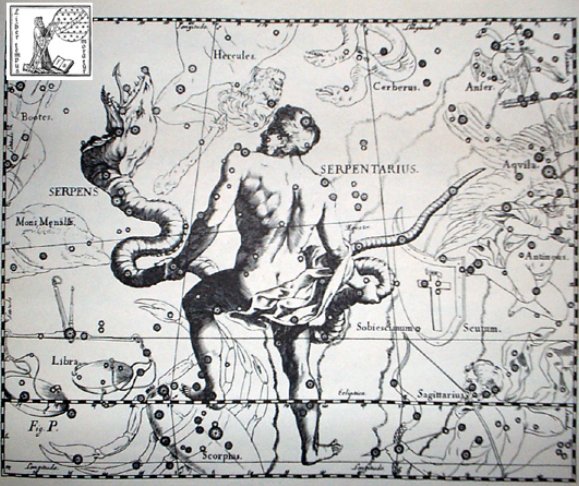2. The distance from Denebakrab to the ancient Capricorn solstice is around 33º, Allen says. This is practically equal to 33 days (33 / 360 * 365.25 = 33.48). We ought to find the Capricorn solstice around 33 glyphs beyond Ga7-21:
Possibly Allen refers to 'January 3 where 'Land' ends and the manzil Shaula begins.
But
33 days, we remember, was also a measure on Hawaii:
... the renewal of kingship at the climax of the Makahiki coincides with the rebirth of nature. For in the ideal ritual calendar, the kali'i battle follows the autumnal appearance of the Pleiades, by thirty-three days - thus precisely, in the late eighteenth century, 21 December, the winter solstice. The king returns to power with the sun ... December 21 - 33 days = day 322 (100 more than 222) = November 18 (which at the time of G was at Ga8-18 (222). In Double Double this table was presented:
From the juvenile manu rere in Ga8-20 up to and including the reversed old one in Gb8-5 there are 448 - 224 = 224 glyphs. When Qalb al Akraab ends - in 'January 2 or 231 days after 'May 16 (136) - it is day 33 from the heliacal risings of Denebakrab and Wei. The juvenile new year was possibly identified with Alya (θ Serpentis), the last to rise star in Serpens Cauda and with a name similar to one of those for α Serpentis (Alyat):
... Alioth, sometimes Allioth, seems to have originated in the first edition of the Alfonsine Tables, and appeared with Chaucer in the Hours of Fame as Aliot; with Bayer, as Aliath, from Scaliger, and as Risalioth; with Riccioli, as Alabieth, Alaioth, Alhiath, and Alhaliath, all somewhat improbably derived, Scaliger said, from Alyat, the Fat Tail of the Eastern sheep. But the later Alfonsine editions adopted Aliare and Aliore - Riccioli's Alcore - from the Latin Almagest of 1515, on Al Tizini's statement that the word was Al Hawar, the White of the Eye, or the White Poplar Tree, i.e. Intensely Bright; Hyde transcribing the original a Al Haur... ... This title [Alcor for 80 Ursae Majoris), and that of the star ε, Alioth, may be from the same source, for Smyth wrote of it: They are wrong who pronounce the name to be an Arabian word importing sharp-sightedness: it is a supposed corruption of al-jaún, a courser, incorrectly written al-jat, whence probably the Alioth of the Alfonsine Tables came in, and was assigned to ε Ursae Majoris, the 'thill-horse' of Charles's Wain. This little fellow was also familiarly termed Suhā (The Forgotten, Lost, or Neglected One, because noticeable only by a sharp eye), and implored to guard its viewers against scorpions and snakes, and was the theme of a world of wit in the shape of saws ... but Miss Clerke says: The Arabs in the desert regarded it as a test of penetrating vision; and they were accustomed to oppose 'Suhel' to 'Suha' (Canopus to Alcor) as occupying respectively the highest and lowest posts in the celestial family. So that Vidit Alcor, et non lunam plenum, came to be a proverbial description of one keenly alive to trifles, but dull of apprehension for broad facts." (Allen) In the Encyclopaedia of the Hindu World: Tradition goes that to be unable to see the Pole Star, the Milky Way and Arundhatī indicates that one is 'already with death' and to see Arundhatī and the Polar Star intermittently presages death within a year. ... It [α] was also Alioth, Alyah, and Alyat, often considered as terms for the broad and fat tail of the Eastern sheep that may have been at some early day figured here in the Orientals' sky; but we know nothing of this, and these are not Arabic words, so that their origin in Al Hayyah [Arabic for Snake] of the constellation is more probable ... And perhaps the curious left leg in Ga7-21 depicts the same old snake (Al Hayyah):
The right leg has 3 visible toes and it could mean 'land' is in front (in contrast to 'sea' at left) - we are south of the equator. But the running figure surely must be interpreted as 'not standing still', although Wei and Denebakrab probably mark the beginning of the solstice. The running sign contradicts the pair of Janus 'eyes' (mata, faces). Perhaps it implies the old winter year is quickly escaping from view: ... For the Marquesas are given: - daybreak, twilight, dawn, ('the day or the red sky, the fleeing night'), broad day - bright day from full morning to about ten o'clock -, noon ('belly of the sun') ... | |||||||||||||||||||||||||||||||||||||||||||||||||||||||||||||||||||||||||||||||||||||||||||||||||||||||||||||||||||||||||||||||||









